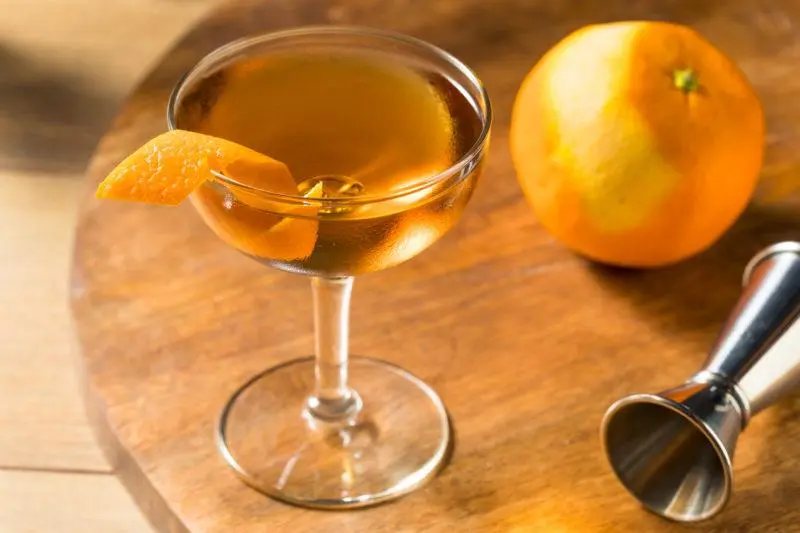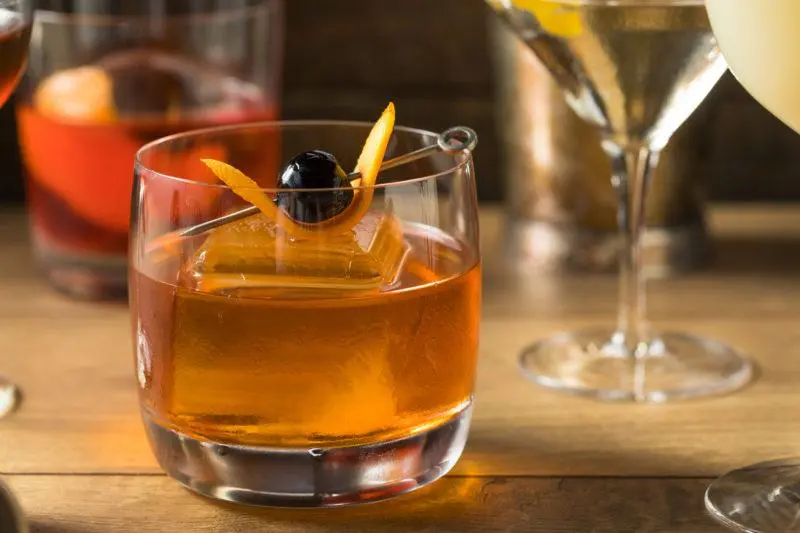Contents
- Fernet? What kind of exotic is this?
- And what makes fernet different from other herbal liqueurs?
- I heard about Fernet Branca. Is this a fernet?
- I see where you are going. Fernet can be cooked at home?
- Yes, it’s complicated. Is industrial fernet prepared in the same way?
- It’s clear. I’m not familiar with fernet as a style. Where to begin?
- And drink it, of course, should be in the proper way?
Walk through the nightclubs of Buenos Aires or pop into any bar on the San Francisco coastline, and you’re bound to find a few people knocking over a shot of caramel-flavored liqueur. Why are they drinking this earthy concoction of woody cologne, tea tree oil and unsweetened cough syrup? Because it is a fernet, an old Italian digestif, behind the coarse bitterness of which lies dozens of the finest flavors. And this review is dedicated exclusively to him!
1
Fernet? What kind of exotic is this?
Fernet is an Italian “drinkable” bitter, a bitter herbal liqueur, a type of amaro (amaro, from Italian “bitter”). It usually contains 45% alcohol and a small amount of sugar. The composition of the drink from different manufacturers is kept in the strictest confidence, but typical botany includes myrrh, rhubarb root, chamomile flowers, cardamom, aloe and saffron, and grape spirit is used as an alcoholic base. Fernet, due to its properties to stimulate digestion, is considered a classic digestif and is served at the end of a meal, but in Italy it is often accompanied by coffee or added directly to a cup of espresso (a proven hangover cure).
2
And what makes fernet different from other herbal liqueurs?
Most herbal liqueurs come from the Italian amaro. These are beverages prepared from alcohol by maceration of herbs, roots, flowers, bark and citrus fruits, traditionally consumed in small quantities after meals. Among them are easily recognizable Campari and Aperol or, for example, a typical Italian vermouth. The classic fernet usually sits at the end of the amaro spectrum in terms of intensity, with more pronounced botanical flavors and much more intense bitterness. In addition, it is usually stronger (from 39% to 45%) and contains almost no sugar. However, the market does not stand still. Modern fernets are more friendly to the refined palate of the inhabitants, they have more fruit and spicy motifs, as well as sweet tastes.
3
I heard about Fernet Branca. Is this a fernet?
Yes and no. Obviously, Fernet-Branca is a fernet as a category of drinks, but not the only representative of this not too extensive, but still diverse group of amaro. So, in different parts of the world are known: Italian Martini & Rossi Amaro Fernet, Nardini Fernet and Luxardo Fernet Amaro, American Letherbee Fernet and Fernet Leopold Highland Amaro, Czech Fernet Stock and R. Jelinek Fernet, Mexican Fernet-Vallet and many others. By the way, black Riga balsam is also often referred to as a fernet (now you can imagine the taste of a typical fernet). But try to order a fernet in any bar and in 9 cases out of 10 you will be poured a Ferent Branca – it cannot be taken away from popularity, because it was from him that fernets as such began.

Ferent Branca is the brainchild of a native of Milan, self-taught apothecary Bernardino Branca. Shortly after the invention of bitter in 1845, the Branca di Romanico family founded the Fratelli Branca Distillerie, which produces the drink to this day. The name “Fernet” comes from the name of the fictional Swedish doctor Fernet, with whom Branca allegedly invented the “magic elixir” for all diseases (with a fictional Swede pharmacist, the new drink quickly gained fame as the No. 1 drug). Today, Fratelli Branca Distillerie, in addition to the classic fernet, produces Brancamenta mint fernet, grappa under the Candolini and Sensèa brands, Strevecchio Branca brandy, Caffè Borghetti coffee liqueur and other drinks. The holding also owns the rights to distribute Sierra tequila, Southern Comfort New Orleans liqueur and Tsarine champagne.
Fernet Branca’s recipe remains a trade secret, but of the 27 herbal ingredients that the manufacturer claims, we know as many as 14: Chinese cinchona, rhubarb root, chamomile flowers, cinnamon, lime blossom, orris root, saffron (they say that 75% of all saffron , produced in the world, buys Fratelli Branca Distillerie), zedoaria turmeric root, galangal root, myrrh, gentian root, aloe, bitter orange peel and cardamom.
4
I see where you are going. Fernet can be cooked at home?
You can, of course, but the recipes will not please you. For example, this is a recipe for a typical fernet from Italy (closest in taste to Luxardo Fernet Amaro at 45%).

fernet italian recipe
(proportions decrease or increase proportionally)
- 2 g cinchona bark (Cinchona succirubra)
- 3 g of saffron
- 3 g white agaric (Polyporus officinalis)
- 3 g of Jateorhiza palmata root
- 5 g myrrh powder
- 5 g aloe (pulp on the inside of the leaf)
- 10 g zedoaria turmeric root
- 10 g Venetian teriaca (Teriaca veneta)
- 10 g anise seeds
- 10 g gentian root
- 10 g rhubarb root
- 10 g licorice root
- 20 g chamomile flowers (Matricaria chamomīlla)
- 20 g dried peppermint
- 1,5 l grain alcohol 95%
- 1,5 liters of distilled water
- 1 drop peppermint essential oil
How to cook:
Grind all botany as finely as possible, place in a jar of a suitable volume and pour 1 liter of alcohol with 200 ml of water. Maceration should take place in a dark warm (possibly very warm, for example, near the battery) place for at least 15 days. Then strain the infusion through several layers of gauze, squeeze out the residue, filter through a cotton filter. Mix with the rest of the alcohol and water, add a drop of peppermint essential oil. Color the fernet in the desired color with caramel and pour into clean bottles. The drink must rest for 6 months before it can be tasted. It can also be aged for several months in a new white oak or chestnut barrel. There is no sugar in the recipe, as this does not correlate with the medicinal effect of the bitter – it worsens digestion.

We admire the recipe, google botany, smack our lips with annoyance and cook something simpler. For example, not too strong, not too sweet Amaro alle Erbe (herb bitter).

Recipe Amaro alle erbe
- 5 lemon balm leaves
- 5 sage leaves
- 10 rosemary needles (not branches)
- 1 inflorescence of centaury (Centaurium erythraea)
- 15 juniper berries
- 5 clove buds
- a piece of cinnamon (1,2 cm from the stick)
- piece of violet root (Iridis rhizoma)*
- piece of calamus root*
- piece of gentian root*
- piece of thorn root (Carlina acaulis) *
- 2 milk thistle flowers
- 200 ml grain alcohol
- 650 ml of white vermouth
- 150 g granulated sugar
* – about 3-5 g each, depending on preferences (orris root is bitter-sweet and enhances the taste, gentian is a bitter component, calamus is the source of a bitter-spicy taste, and thorny root has a bitter-sweet, almond flavor).
Grind all the botany and soak in alcohol for 5 days, placing everything in a glass jar with an airtight lid. It is advisable to leave the jar in a dark, warm place, you can near the battery. Pour sugar into vermouth – let it also stand for 5 days until dissolved. After 5 days, strain the infusion into a clean jar and set aside to be stored in a dark, cool place, and pour the remaining botany with vermouth with sugar for another 7 days. After a week, strain the vermouth through a sieve into a jar of flavored alcohol, let the mixture stand for 1 day, and then filter through a cotton wool or coffee filter. Pour the finished drink into a clean bottle, cork tightly and let it rest for 6-8 months before tasting.
A stack of such amaro will be an excellent digestif at the end of a hearty dinner – bitter stimulates digestion and pleasantly warms from the inside.
5
Yes, it’s complicated. Is industrial fernet prepared in the same way?
By and large, yes. Distillation is not applied. But the production process is quite complex and includes several different types of maceration. The Fernet Branca factory occupies an entire city block and is a labyrinth of rooms filled with maceration vessels, tanks and wooden vats of every shape, size and configuration. After mixing the macerates, the drink is aged for 12 months in huge vats made of Slovenian oak with a volume of 15000 to 20000 liters each. There are more than 300 of these in the factory.

6
It’s clear. I’m not familiar with fernet as a style. Where to begin?
Fernet, as stated earlier, sits at the top of the amaro spectrum in terms of alcohol content, bitterness, and concentration of botanical flavor. If you are adventurous and in the process of researching herbal liqueurs, we would recommend that you try as many different brands of fernet as you can. Branca is certainly considered the ideal representative of this category, but not the only one. Its strong medicinal taste with a powerful minty component and intense bitter aftertaste will not be to everyone’s taste. In other manufacturers, fernet is usually less brutal, often not as strong, and bitterness is balanced by sweetness. We recommend trying Nardini Fernet, Fernet Stock, Fernet Leopold, Salmiakki Dala, Fernet Angelico, Contratto Liqueur Fernet or Letherbee Fernet first – they are not too strong, and the bitterness is slightly offset by sweet tastes.
7
And drink it, of course, should be in the proper way?
How else? Fernet is a unique alcoholic drink, the taste of which is not given to everyone. It has a very medicinal, bitter and rough taste, but at the same time the traditional way of consumption is in its pure form or in rock with ice. Not the best way to get acquainted with such an exotic. We recommend that you first take a small sip (in Fernet Branca they recommend taking three such sips – this will make it possible to appreciate the entire flavor spectrum of the digestif) in order to understand the general meaning of the drink, and then choose a base for mixing with it.
In San Francisco, where bitter has been a cult favorite since before Prohibition, and today the bay accounts for 25% of U.S. fernet consumption, it’s customary to wash down a shot of flavored bitterness with a glass of ginger ale (an excellent combination, especially if it’s homemade ginger ale of your own making) . In Argentina, fernet with cola (1:7) has become a national cocktail. It is even removed from the menu everywhere to encourage people to order more expensive cocktails.
Fernet is extraordinarily popular in Argentina, where he got back during the great European immigration wave to the country at the end of the 19th century. Especially in the province of Cordoba, called the “fernet capital of the world”. Almost 3 million liters of it are drunk there every year, which is just under 30% of the national consumption. Fratelli Branca Distillerie even had to open a factory in Argentina. In total, 25 million liters of fernet are produced in the South American country, 35% of which are bought up in Buenos Aires and its environs.
A good solution would be to follow the experience of the Italians and add your fernet to a cup of espresso. But the best way to get acquainted with the bitter is to mix a cocktail with it. Preferably one in which its rough botany becomes not an obstacle to a harmonious, balanced taste, but its predecessor. The reference in this regard is the Hanky Panky cocktail, created back in 1903 at the Savoy Hotel in London by bar-woman Ada Coleman.

Cocktail Hanky Panky
- 60 ml of gin
- 45 ml sweet red vermouth
- 15 ml fernet
Stir. Cocktail glass, garnish with orange peel.

Other fernet cocktails are as balanced as the Hanky Panky, and in some of them the bitters play a major role. Here, in our opinion, are four cocktails that will allow you to fully appreciate the richness of the taste of the Italian digestif:

Cocktail Midnight Stinger / Midnight Stinger
- 30 ml fernet
- 30 ml bourbon
- 22,5 ml freshly squeezed lemon juice
- 12,5 ml sugar syrup 2:1
Shake. Rocks with crushed ice, garnish with a sprig of mint.

Cocktail Famous / Del Famoso
- 45 ml silver tequila
- 22,5 ml fernet
- 15 ml sweet red vermouth
- 15 ml sugar syrup 2:1
- 2 dessert bitter Angostura
Stir. Cocktail glass without decoration.


Cocktail Toronto / Toronto
- 60 ml rye whiskey
- 15 ml fernet
- 15 ml simple sugar syrup
- 2 dessert bitter Angostura
Stir. Cocktail glass, garnish with a twist of orange peel. You can cook like Old Fashion with refined sugar.

Cocktail Zeus / Zeus
- 30 ml fernet
- 24 pcs. raisins
- 60 ml of cognac
- 3,8 ml coffee liqueur
- 7,5 ml maple syrup
- 30 ml chilled water
Cool the fernet in an ice glass, make the raisins in a shaker. Intensive shake of all ingredients. Fine strain into a cocktail glass, garnish with coffee beans.









